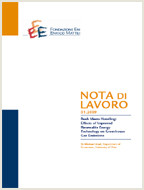Optimal Patentability Requirements with Fragmented Property Rights

Data
06.10.2010
06.10.2010
Autori
Vincenzo Denicolò, Christine Halmenschlager
Codice JEL
O3, O34
O3, O34
Parole chiave:
Intellectual Property Rights, Fragmentation, Patent Requirements
Intellectual Property Rights, Fragmentation, Patent Requirements
Publisher
Economy and Society
Economy and Society
Editor
Fausto Panunzi
Fausto Panunzi
We study the effect of the fragmentation of intellectual property rights on optimal patent design. The major finding is that when several complementary innovative components must be assembled to operate a new technology, the patentability requirements should be stronger than in the case of stand-alone innovation. This reduces the fragmentation of intellectual property, which is socially costly. However, to preserve the incentives to innovate,
if a patent is granted the strength of protection should be generally higher than in the stand-alone case.
